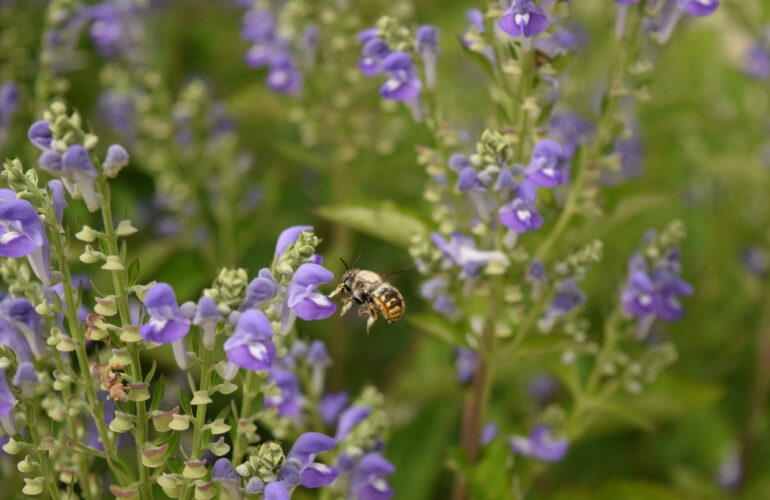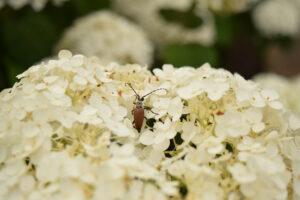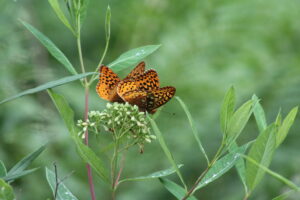
A blooming garden is a buffet for pollinators, animals that eat nectar and/or pollen. Nectar provides pollinators with carbohydrates for energy while pollen consists of fat and protein. Pollinators also rely on micronutrients found in their food. A well-rounded diet increases pollinator resilience against modern day pressures including disease, pesticides, and climate change.
Not all flowers are created equal in the eyes of pollinators. Nutritional value varies from flower to flower, and pollinator species have different nutritional preferences. The complexity of pollinator nutrition can make plant selection daunting. When you visit your local greenhouse this spring, consider the following to ensure the plants you buy are better for pollinators:
Bloom time
In Pennsylvania, you can find pollinators foraging for food from early March until the first hard frost. Honey bees (Apis mellifera) are often the first bees active in spring, followed by cellophane (Colletes sp.) and mason (Osmia sp.) bees. Gardens are abundant with pollinator activity throughout the summer as more bee and butterfly species emerge and hummingbirds migrate from Central America. In late fall, carpenter bees (Xylocopa sp.), flower flies (Syrphid sp.) and honey bees still linger on golden blooms.
Gardens that have flowering plants in spring, summer, and fall can support pollinators for the entire growing season.

Longhorn Beetle on Hydrangea by Heather Frantz
Cultivar versus species
Cultivars have been created by breeding plants for physical characteristics desirable for humans. As such, cultivars often have little to no nutritional value for pollinators. Double bloomed flowers are a great example; the reproductive area of the flower that has pollen is significantly reduced, replaced with more petals.
Cultivars may have their place in pollinator gardens. Dr. Emily Erikson studied the attractiveness of various cultivars as a doctoral candidate at Penn State. Still, to simplify plant selection, choose straight species rather than cultivars. You can identify a cultivar by looking at the plant label. Cultivars will have a name following their scientific name. For example, Penstemon digitalis is a native plant with white tubular flowers and green foliage. Penstemon digitalis ‘Dark Towers’ is a cultivar with pink blooms and maroon-red foliage.
Diversify your garden
Aim to have as many different types of flowering plants as your garden space allows. By planting a greater diversity of flowers, you can support a greater diversity of pollinators.
There are hundreds of pollinator-friendly flowers to choose from. To simplify plant selection for gardeners, the Center for Pollinator Research has created taxa-specific plant lists. Plants were selected for a high degree of attraction in most temperate North American landscapes using data from entomologist Charles Robertson.
The Penn State Master Gardeners have a Pollinator Friendly Habitat Worksheet that has a comprehensive plant list as part of their Pollinator Friendly Habitat Certification.

Great Spangled Fritillary on Frostweed by Tasha Ferris in Moshannon State Forest
Most importantly, love your garden. Plant flowers that bring you joy and take pleasure in finding bees, hummingbirds, butterflies, and flies in your backyard. For more information on pollinators, visit the Center for Pollinator Research website.

Written by Heather Frantz
Education Program Specialist, Penn State Center for Pollinator Research
Heather is an environmental educator with 9 years of experience developing and facilitating educational programs for all ages. Her mission is to make the world a better place for both wildlife and people.
Feature photo is Wool Carder Bee on Skullcap by Heather Frantz




